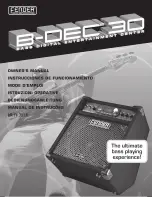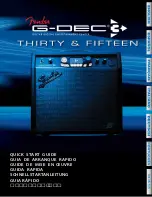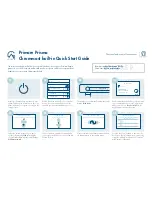
Owner’s Manual
DECWARE
/
High Fidelity Engineering Co.
1202 N.E. Adams Street Peoria IL 61603 USA
309-671-2428 Fax 309-672-1060 e-mail: [email protected]
www.decware.com (C)2000 All Rights Reserved
at least 5 hours.
Once you have repeated this process 5 times your soundstage will bloom and the focus will lock
into a crystal clear image.
If you listen to your amp during the burn-in process this is what you will experience: First the
amp will sound good followed by almost an immediate increase in harshness which after 30
minutes will change to dullness and continue to go back and forth. During this mind bending
experience, the imaging and soundstage will be unstable and somewhat restricted.
There will be moments of incredible sound during this process and equally ugly sound. You will
know when the amp is burned-in because out of nowhere some night when your listening the
amp will bloom with a soundstage almost double in size and forever stay that way in all
successive listening sessions. As you amplifier ages, it will season like fine wine and continue
to do so for many years.
DESIGN GOAL
The design goal behind this amplifier was simply to take our stock Zen Triode amp and push the
envelope of its design to the limit. It uses all the same parts as found in our Signature Mono
Blocks (model SV83S) and is every bit the equal in fidelity when power is not an issue. Perhaps
the purist amp in the world you will likely never find it to be the weak link in your audio system.
Since you only hear the weakest link in a high end audio system, you will find the quality of your
source and cables as well as your speakers to effect profound changes in the overall fidelity of
your system.
Like the stock Zen amp, this is intended for those who like to get lost in a huge 3-D image and
experience the emotional side of music that only this type of resolution can accurately convey
without grain or ear fatigue. It is not intended for loud playback levels, or parties. Unless of
course you have full range horn speakers around 100dB
efficiency in which case you can have both. We recommend 4 ohm speakers with simple
crossovers that are in excess of 90dB for most listening. This amplifier will run speakers down
to less than 1 ohm, and put out more power as it does so. Therefor you need not be concerned
about dips in your impedance curve when choosing a speaker.
tm
DECWARE





























